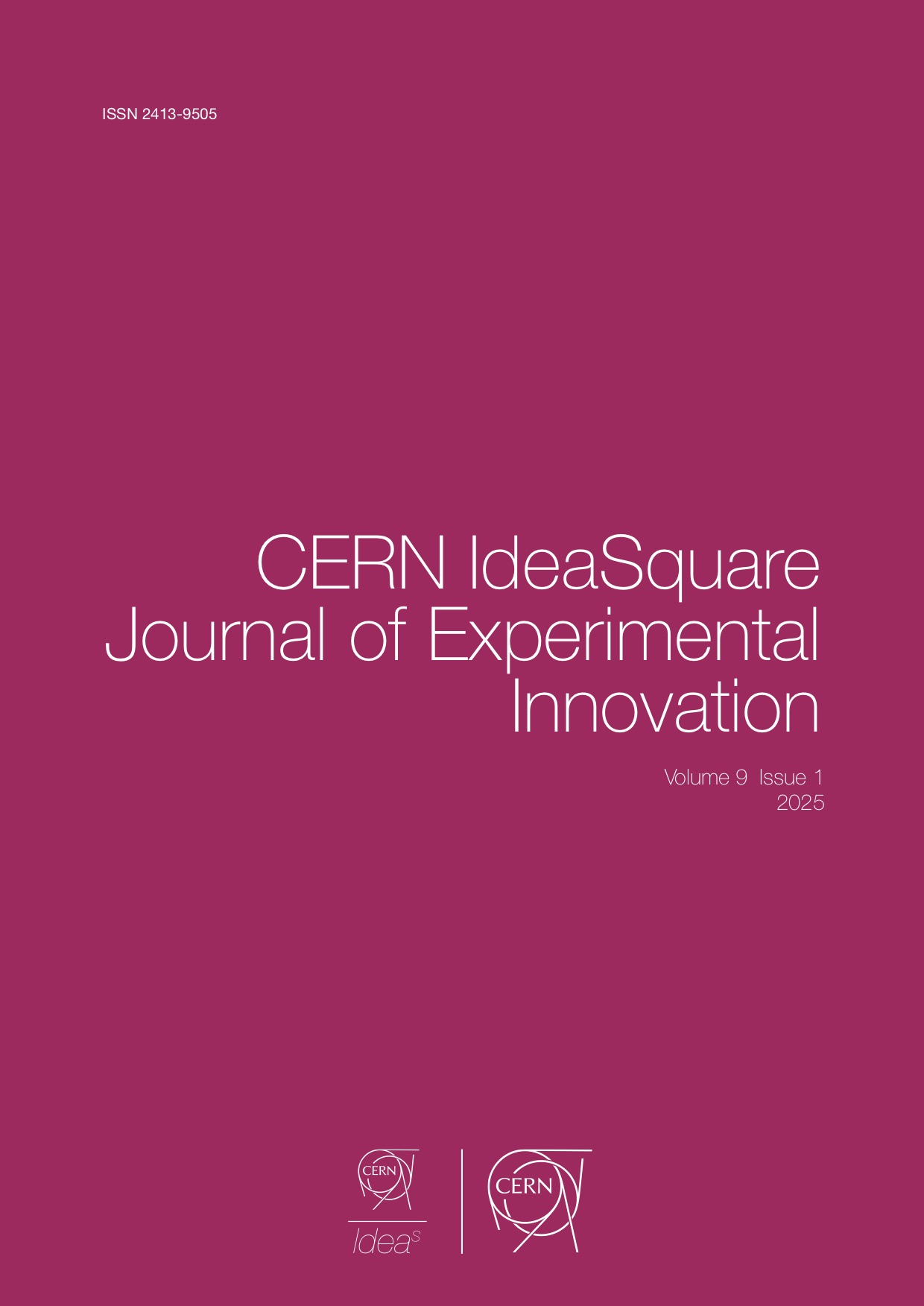The Unbearable Lightness of Uncertainty
DOI:
https://doi.org/10.23726/cij.2024.1583Keywords:
CERN, IdeaSquare, CIJ, coffee-stained paperAbstract
As many others, the sentence above emerged during a sunny July afternoon while the IdeaSquare Self-Appointed Innovation team (ISSAIT) consumed pizza. It was clear to everyone that a possible answer to this conundrum required starting the research from almost the very beginning…yes THAT beginning. So here they went!
References
S. Sarkar, H. Satz and B. Sinha, The Physics of the Quark-Gluon Plasma: Introductory Lectures, Springer 2009.
J.A. J. Gowlett, The discovery of fire by humans: a long and convoluted process, Phil. Trans. R. Soc. B 371 (2016) 20150164.
R. Wrangham, Catching Fire: How Cooking Made Us Human, Basic Books, 2009.
K. Fonseca-Azevedo and S. Herculano-Houzel, Metabolic constraint imposes trade-off between body size and number of brain neurons in human evolution, PNAS 109 (45) 18571.
S. Herculano-Houzel, Human Advantage: A New Understanding of How Our Brain Became Remarkable, The MIT Press (2016).
G. Pezzulo, T. Parr and K. Friston, The evolution of brain architectures for predictive coding and active inference, Phil. Trans. R. Soc. B 377 (2021) 20200531.
D. Mobbs, C.C. Hagan, T. Dalgleish, B. Silston and C. Prévost, The ecology of human fear: survival optimization and the nervous system, Front. Neurosci. 9 (2015) 55.
Š. Peléšková, J. Polák, M. Janovcová, A. Chomik, K. Sedláčková, D. Frynta and E. Landová, Human emotional evaluation of ancestral and modern threats: fear, disgust, and anger, Front. Psychol. 14 (2024) 1321053.
R. D. Austin, L. Devin, E. E. Sullivan, Accidental Innovation: Supporting Valuable Unpredictability in the Creative Process. Organization Science 23(5) (2012) 1505.
P. Van Andel, Anatomy of the Unsought Finding. Serendipity: Origin, History, Domains, Traditions, Appearances, Patterns and Programmability, The British Journal for the Philosophy of Science, 45, No. 2 (1994) 631.
S. Copeland, W. Ross and M. Sand, Serendipity Science: An Emerging Field and its Methods, Springer 2023.
W. Ross and S. Copeland, The Art of Serendipity, Springer 2022.
C. Busch, The serendipity mindset: the art and science of creating good luck, Penguin Random House 2020.
C. Busch, Towards a Theory of Serendipity: A Systematic Review and Conceptualization, Journal of Management Studies 61 (2024) 3.
D. G. Wilson, The invaluable art of unlearning, Journal of the Royal Society of Medicine, 81 (1988) 3.
É. Dunne and A. Seery, The Pedagogics of Unlearning, Punctum Books, 2016.
E. McWilliam, Unlearning how to teach, Innovations in Education and Teaching International Vol. 45, No. 3 (2008) 263.
M. Bonchek, Why the Problem with Learning Is Unlearning, HBR November 03, 2016.
R. Nozick, Anarchy, State, and Utopia, Basic Books (1974), pp. 42–45.
J. Heller, Joseph, Catch-22, Simon & Schuster 1961.
Downloads
Published
How to Cite
License
Copyright (c) 2024 AA VV

This work is licensed under a Creative Commons Attribution 4.0 International License.
Authors who publish with this journal agree to the following terms:
- Authors retain copyright and grant the journal right of first publication with the work simultaneously licensed under a Creative Commons Attribution License that allows others to share the work with an acknowledgement of the work's authorship and initial publication in this journal.
- Authors are able to enter into separate, additional contractual arrangements for the non-exclusive distribution of the journal's published version of the work (e.g., post it to an institutional repository or publish it in a book), with an acknowledgement of its initial publication in this journal.
- Authors are permitted and encouraged to post their work online (e.g., in institutional repositories or on their website) prior to and during the submission process, as it can lead to productive exchanges, as well as earlier and greater citation of published work (See The Effect of Open Access).


